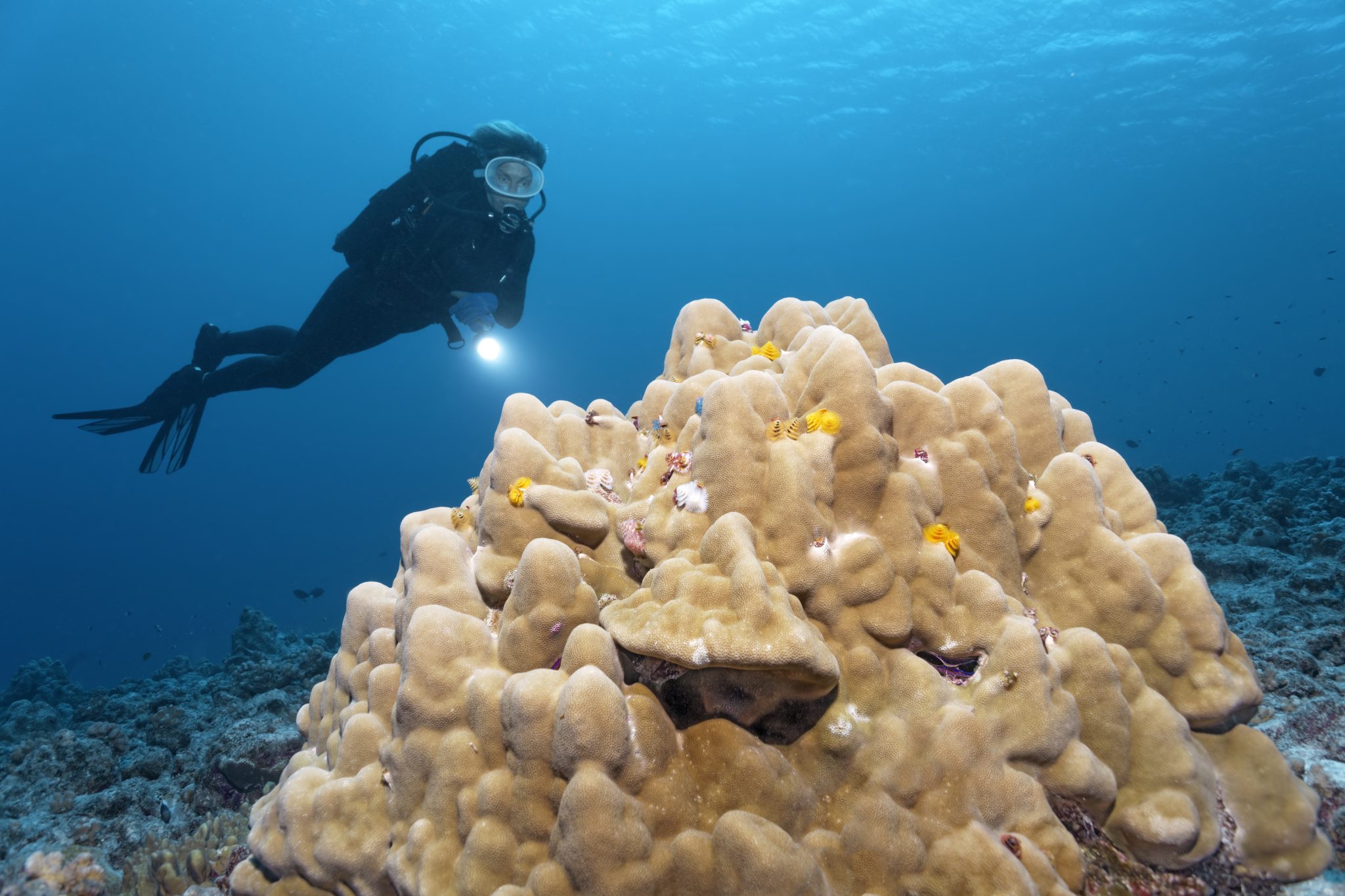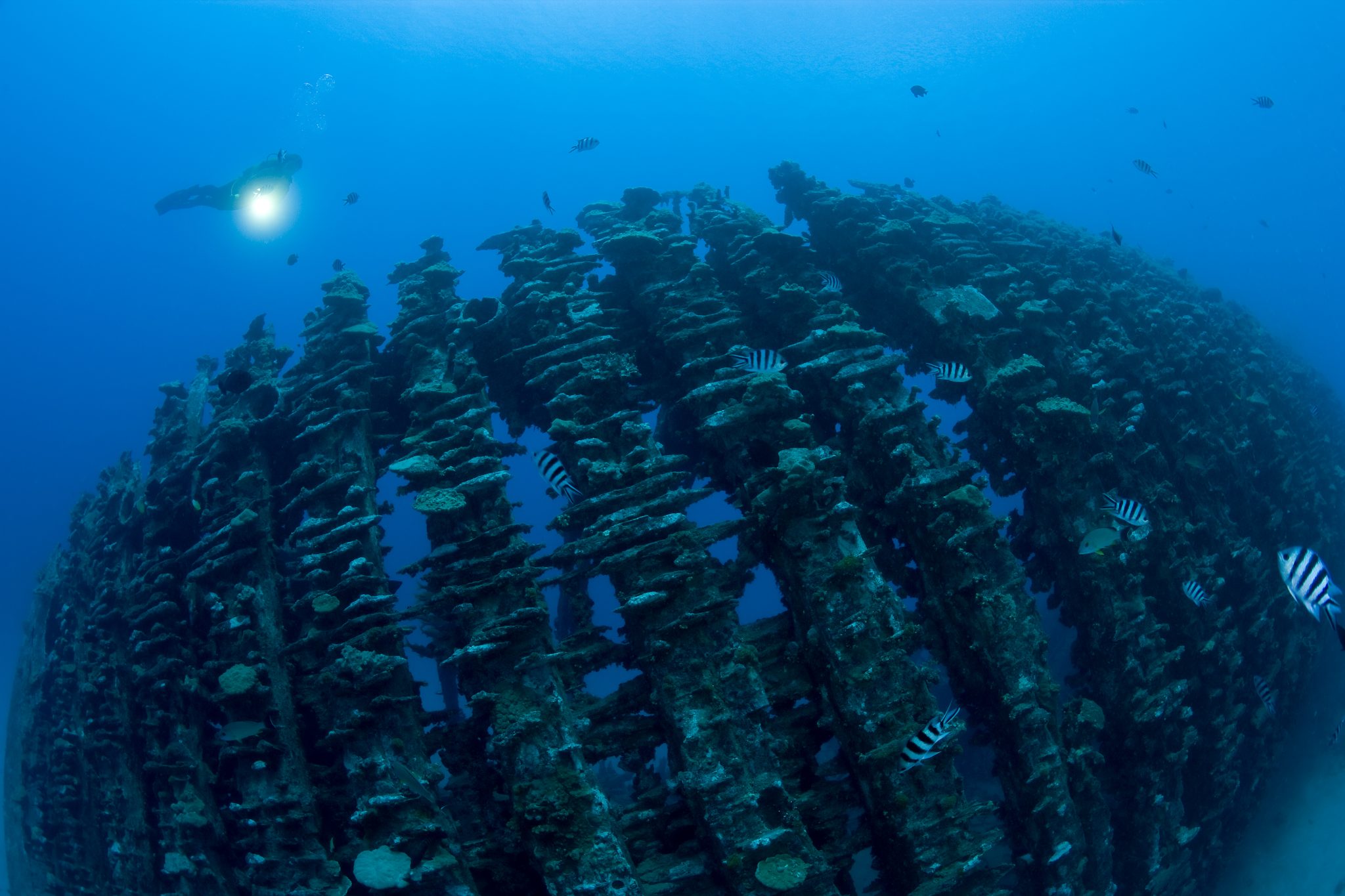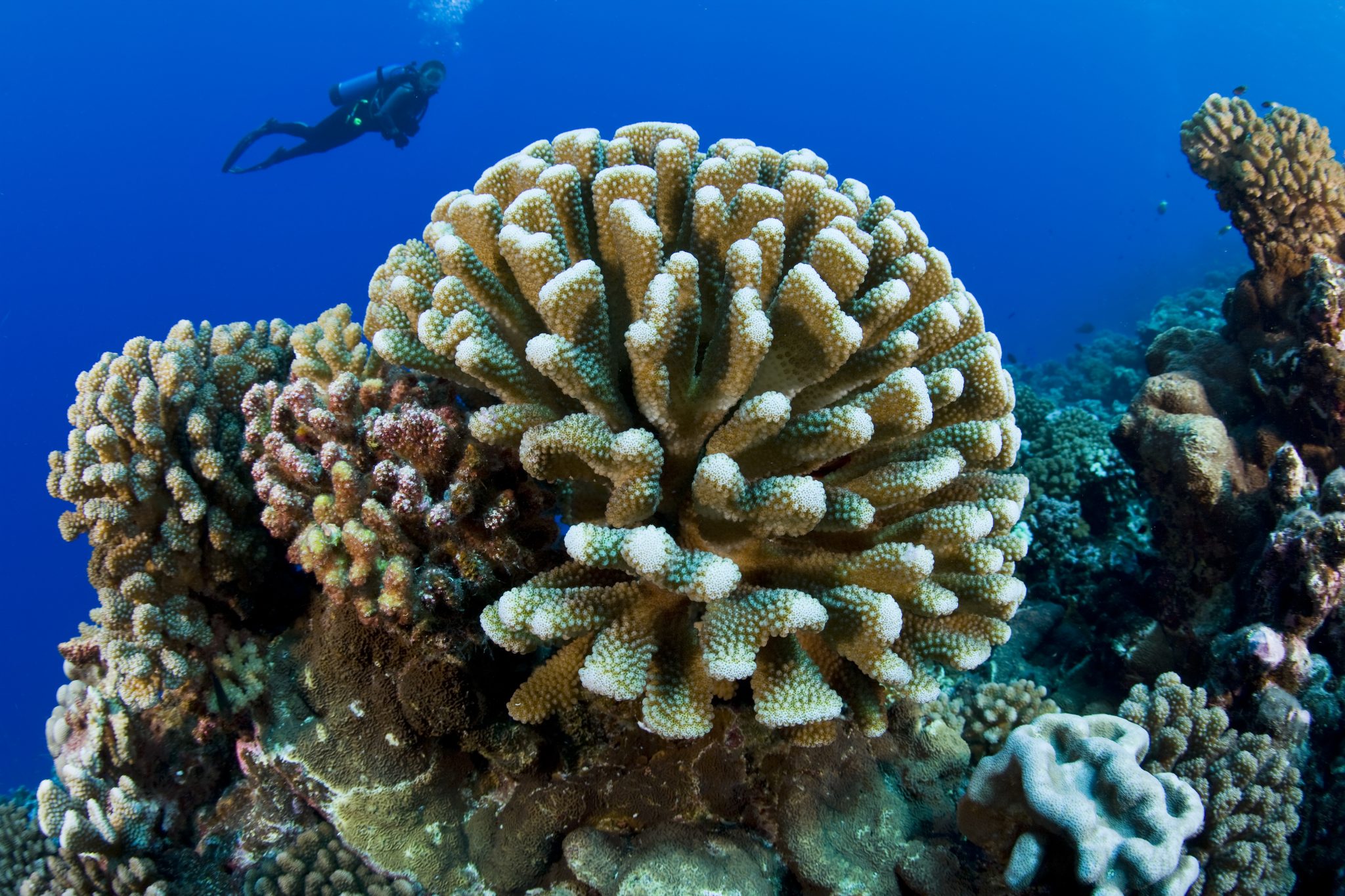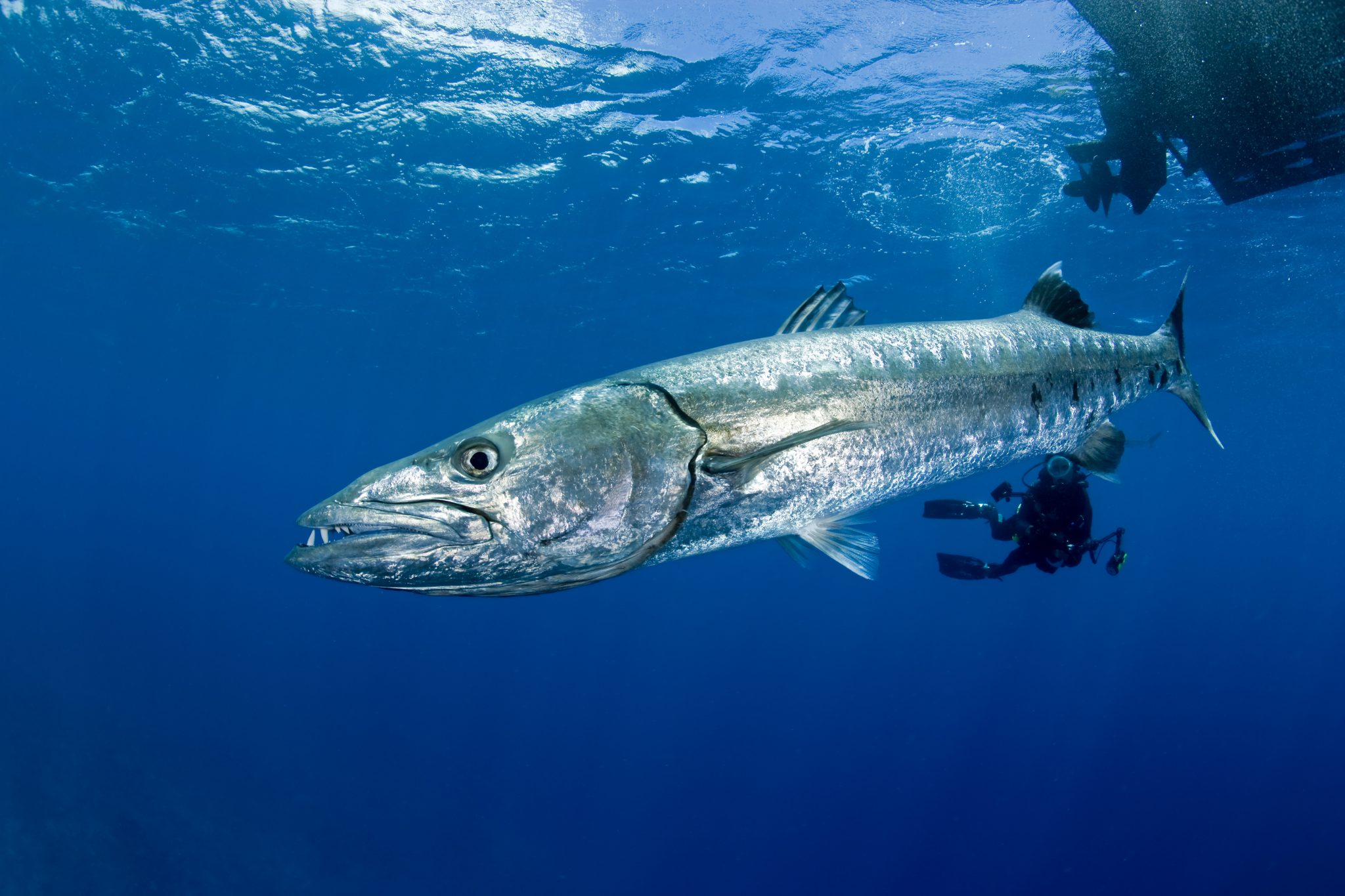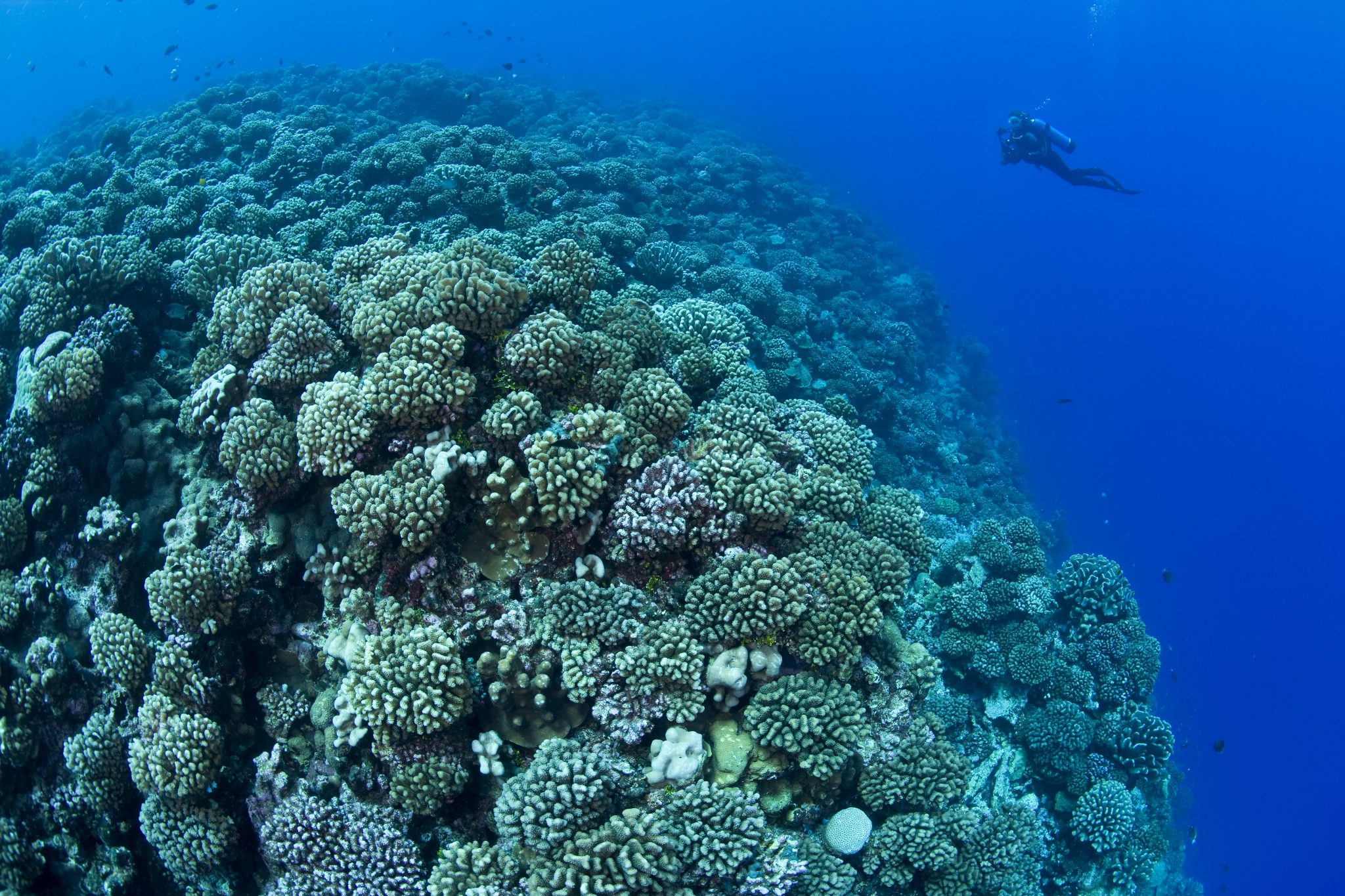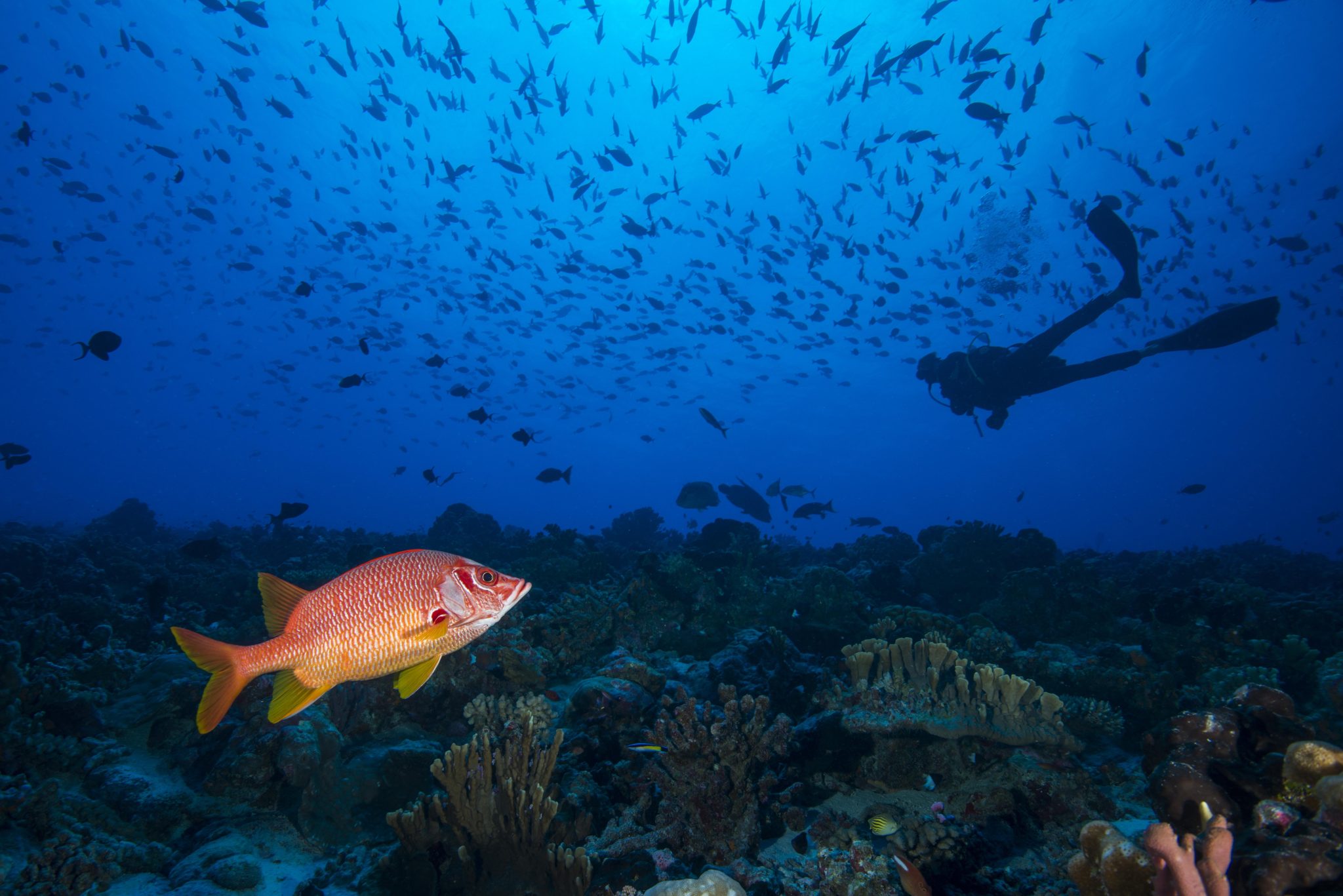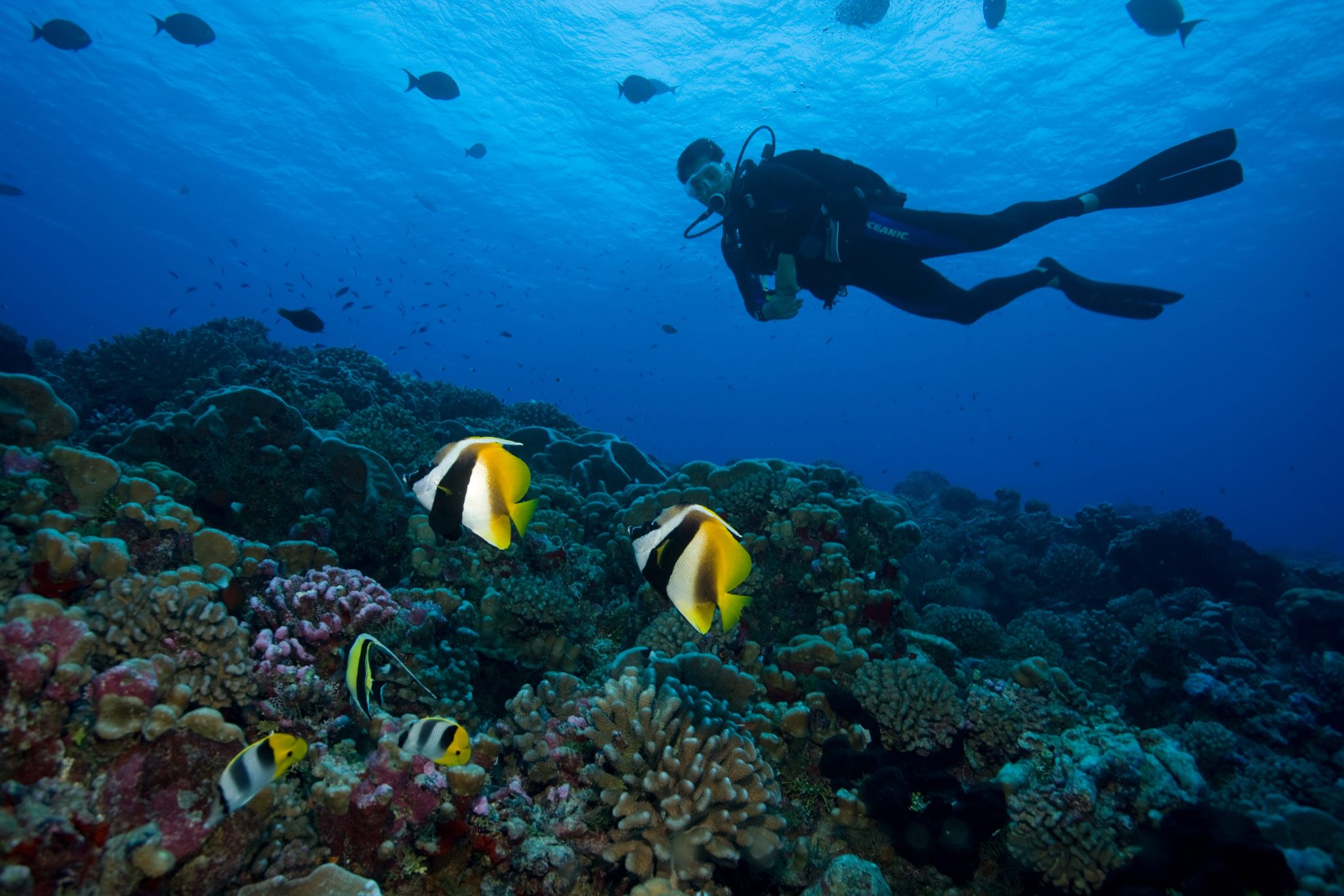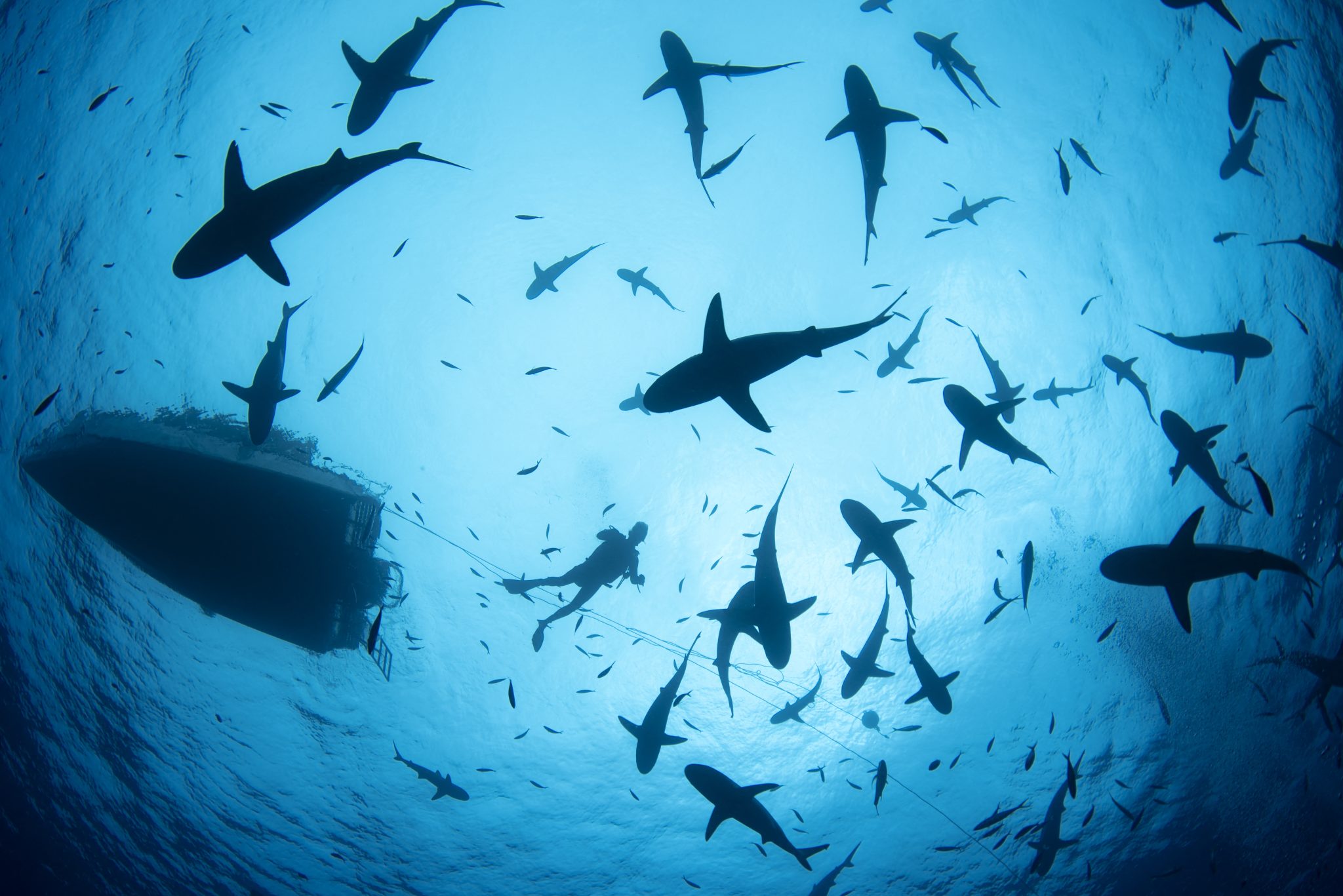

Overview
Fact File
| Capital | Papeete |
| Population | 282,500 |
| Languages | French, Tahitian, Austral, Papa, Mangareva, Tuamotuan, Marquesan, Raivavae |
| Time | GMT-9 to GMT-10 |
| International Dialling Code | +689 |
| Currency | CFP Franc (XPF) |
| Tourist Board | |
| International Airports | Far’a International (PPT) |
About The Diving
The water is on average 27°C, never dipping below 25°C. This warm water paradise has over 1,500 miles of coastline, providing a huge variety of dive sites and marine life. The visibility is excellent, making it great for spotting the sharks, rays and other pelagics.
Video
Dive Highlights
Tiputa Pass in Rangiroa
Rangiroa is located in the Tuamotu archipelago. Its lagoon is among the largest in the world and home to the Tiputa pass which is famous for its sharks, manta rays, turtles and dolphins. With an incoming tide, dives start at the entrance of the pass and go to the interior of the huge lagoon. This drift dive is famous for its large fauna, including grey reef sharks, turtles, manta rays, dolphins, and barracuda while the walls of the pass are home to a multitude of tropical fish. Diving here is between February and November, but September is the best time for sharks.
Garuae Pass, Fakarava
The atoll of Fakarava in the Tuamotu Islands is renowned for its incredible biodiversity and its waters are recognised as a UNESCO biosphere reserve. The most impressive dive is Garuae Pass, famous for the “wall of sharks” that prowl the reefs just outside the pass. Garuae Pass is 1.6 km wide and very deep, allowing the ocean to enter the lagoon completely. A drift dive suitable for advanced divers, the current takes you past thousands of tropical fish above multicoloured coral reef, grey reef sharks, white tips and black tips, even the occasional great hammerhead can be seen. The dives ends at Alibaba canyon and will certainly be one to remember.
Tuheiva Pass, Tikehau
Tikehau Atoll’s only pass to the ocean is shallow, creating a moderate current. Drift diving through Tuheiava Pass boasts of all the Polynesian aquatic fauna. Sharks are present but the stars here are the thousands of tropical fish and extremely rich corals. Divers are treated to schools of blue and grey trevallies, encounters with green turtles, leopard rays and even dolphins. A truly stunning dive.
Tiki Point, Moorea
Moorea has diving for all levels within its fringing reef as visibility is excellent and there is no current, so it offers fantastic conditions for beginners and veterans alike. Outside the reef, larger species including sharks and mammals can be seen. At Tiki Point, likely shark sightings include lemon sharks, grey reef sharks, black tips, and white tips. If you dive on a day with a slight current, larger schools of fish and sea turtles come in to feed on the plankton. Suitable for all divers.
The Spring, Tahiti
A fantastically fun dive for all levels. The Spring is named for the freshwater bubbles constantly bubbling up through the reef from an underwater reservoir. Swimming through bubbles, this shallow reef with minimal currents is a great site for beginners and there is a high probability of seeing numerous turtles as the site is beside the dive site Turtle City.
Anau, Bora Bora
Bora Bora has fantastic diving all around, but Anau is a great place to see manta rays. While ray sightings aren’t guaranteed, they are very common as Anau is home to cleaning stations, which resident manta rays visit daily. The reef is beautiful and the site is shallow so it is suitable for all divers.
When To Go
Polynesia is diveable year-round. June to September are considered good months to visit the islands, swimming with humpback whales in Tahiti is mid-August to the end of October. Hammerhead sharks are best seen December to March and for manta rays June to October are best.

